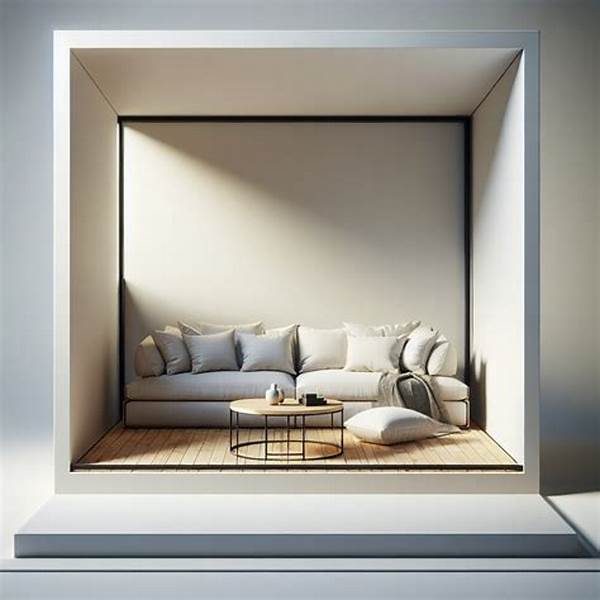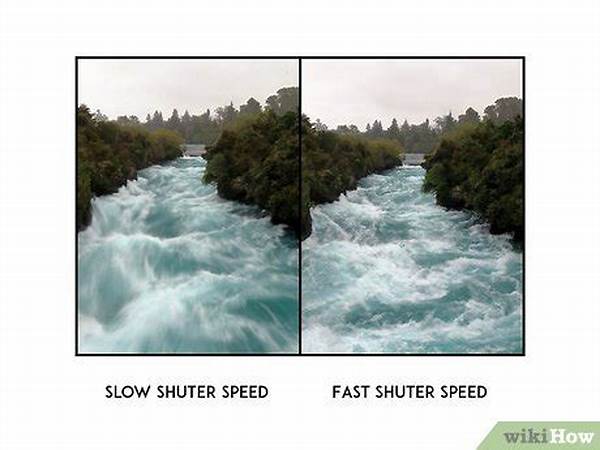Hey there! If you’ve ever dabbled in art, design, or even photography, you’ve probably heard the term “negative space” tossed around like it’s going out of style. But what is this mystical concept, and why is it so, well, important? In our hustle-and-bustle world crammed with vibrant visuals and loud ads, understanding the importance of negative space can really change the game.
Read Now : Attire Tips For Corporate Photography
The Magic Behind the Importance of Negative Space
Negative space, also known as white space, is more than just blank space on a page or image. It’s the unsung hero that gives your design the freedom to breathe and shout out your message without clutter. Imagine walking into a room that’s jam-packed with furniture—overwhelming, right? Now, imagine the same room with just a sleek couch and a stylish coffee table. The importance of negative space is similar; it lets elements stand out and captures your attention without the chaos.
When used correctly, negative space adds a sense of balance and harmony to your design. Think of logos like the FedEx logo, where the clever use of negative space creates an arrow symbolizing speed and precision. Negative space helps direct focus while maintaining an elegant simplicity. But beyond aesthetics, it’s crucial for functionality and user-friendliness, especially in web design. Less clutter means a more straightforward navigation experience, echoing the importance of negative space in enhancing clarity and efficiency.
How Negative Space Impacts Design
1. Aesthetic Appeal: The importance of negative space lies in its ability to make designs look cleaner and more elegant, thereby enhancing aesthetic appeal.
2. Focus: Negative space naturally directs the viewer’s attention to the focal points, enhancing the importance of key elements.
3. Balance: It provides balance, ensuring that no single element overwhelms the design, highlighting the importance of negative space.
4. Clarity: The organization of elements using negative space boosts clarity, a crucial aspect of effective design.
5. Emphasis: Creative use of negative space can emphasize important elements, showing its critical role in design.
6. Breathability: It allows a design to “breathe,” reducing visual clutter and underscoring the importance of negative space.
7. Elegance: Simplicity achieved through negative space often contributes to an elegant design.
8. Usability: In web design, it enhances usability, further justifying the importance of negative space.
9. Memory: Well-designed use of negative space makes a design more memorable, emphasizing its importance.
10. Mood: It can create a mood or atmosphere that enriches the design’s narrative and tone.
More Than Meets the Eye: Importance of Negative Space
Let’s dive deeper. The importance of negative space isn’t just some fancy designer lingo—it’s a crucial element that can make or break your work. By understanding and utilizing negative space, you can create designs that are not only aesthetically pleasing but also provide an intuitive experience for your audience. Plus, it’s a great way to flex your creative muscles and think outside the box.
The strategic use of negative space can highlight specific elements while subtly guiding the reader’s eye. It’s all about finding that sweet spot where the design elements and the empty space coexist in harmony. This balance is what captures attention and communicates the intended message effectively. So, whether you’re crafting a minimalist masterpiece or just ensuring your webpage doesn’t give people headaches, acknowledging the importance of negative space is essential.
Unlocking Potential: Importance of Negative Space
The importance of negative space goes beyond just looking good. It’s about maximizing potential. It’s like dead air in a conversation; sometimes silence says more than words. It’s an artist utilizing a blank canvas, a pause between notes in music that creates rhythm. Here’s how:
1. Enhances Creativity: The importance of negative space lies in pushing boundaries and stimulating creativity.
2. Facilitates Focus: It helps channel where the eye lands first, bolstering the main message.
3. Boosts Engagement: Strategically placed negative space can increase viewer engagement.
Read Now : Practical Methods For Simplifying Prose
4. Adds Value: Good use of negative space can make a design look more valuable and upscale.
5. Supports Branding: It’s key in creating memorable brand visuals.
6. Improves Understanding: Negative space aids in breaking down complicated ideas into comprehensible visuals.
7. Encourages Interaction: In web design, it invites interaction by making navigation intuitive.
8. Simplifies Navigation: Less clutter translates to easier navigation and quicker comprehension.
9. Enriches Aesthetics: Artistic use of negative space adds depth and quality to visuals.
10. Amplifies Messaging: With fewer distractions, the main message hits home stronger and clearer.
The Real Deal on the Importance of Negative Space
Okay, so now you know that the importance of negative space is a pretty big deal. But how do we actually apply it? In real-life scenarios, like designing a logo or a website, incorporating negative space allows you to simplify the visual clutter. It’s the reason why some logos stick in our minds—think Apple or Nike.
Another thing to remember is that negative space is dynamic; it can adapt to different styles and moods. Whether you’re designing something modern with lots of white or aiming for a more vintage vibe with earthy tones, negative space is there to support your style. It’s like having a versatile roommate who always makes the space work.
When harnessed properly, the importance of negative space can turn a mundane piece into something extraordinary. All it takes is a keen eye, a bit of creativity, and the courage to let go of unnecessary fluff. Consider letting the space speak as loudly as the elements it houses—sometimes, it’s the silence between the notes that creates the symphony.
All About Space, Literally: Importance of Negative Space
Yo! Let’s rap about why the importance of negative space shouldn’t be underrated. Remember the last time you checked out a tight design and thought, “Wow, that’s clean!” That’s the power of negative space, fam. It’s like letting your design catch a breath and then hit you with that BOOM you didn’t see coming!
So, when you’re aiming for that sleek, bangin’ look, it’s all about knowing when to say, “chill” to clutter. Negative space clears things up like a vibe check. It lets important elements pop, which gives your design that dope style while keeping focus in check. Reading or navigating becomes mad comfy, and that’s just pure magic.
Getting a hang of this means your designs won’t just look fly—but they’ll have that flow. Negative space might just be that secret sauce you’ve been sleeping on! So don’t let it pass ya by, people. Recognize the importance of negative space because it’s a design game changer, and we all want that winning hit!
Wrapping It Up: Importance of Negative Space
By now, we’ve established that the importance of negative space is not just buzzwords. It’s a fundamental aspect that elevates design from mundane to captivating. Many pieces stand out for their daring simplicity owed to the genius use of negative space. When utilized right, it allows designs to shine with clarity and sophistication.
Designers, artists, and creative thinkers all need to embrace negative space to add a dimension of impact to their work. It’s not just about removing clutter but strategically guiding the viewer’s eye to where it matters. That’s the power of thoughtful design, where every element has its purpose, and spaces tell their narrative.
So next time you find yourself faced with an artistic dilemma, remember to honor the importance of negative space. It’s the friendly ghost that pushes your designs into the spotlight without uttering a single word. Embrace it, play with it, and let it transform your creative projects into something truly worth celebrating.



